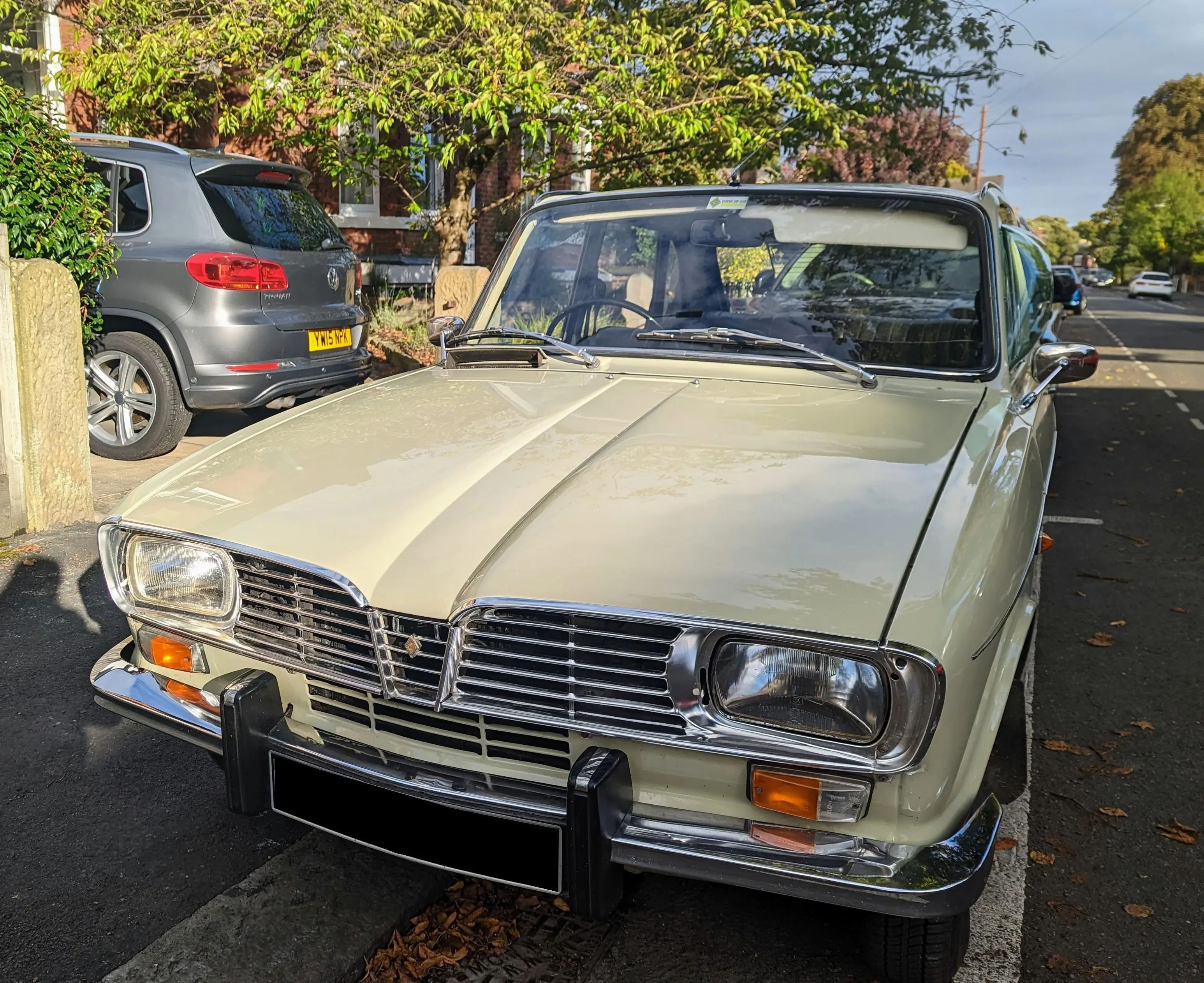MEET THE OWNER – JOHN EVANS AND HIS RENAULT 16GL
05 April 2023
“I first fell in love with the 16, aged 18, in London, borrowing my uncle’s. Then at 21, at university, I got a 6-year-old ’76 TL. It lasted a year before dissolving, but it was a great first car at an exciting time. I was studying Engineering and looking back, my course mates had 2CVs, Renault 6 and Alfa GT... quirkiness reigned on our course! And after the 16, I got a Lancia Trevi - born to be different!”
John Evans never forgot that 16, so he recently became the proud owner of a 1969 British-market GL. In his words, “second time round, nostalgia played a part. But from a design perspective, the superbly comfortable ride, relaxed driving position, and TARDIS-like space have to be up there. Everyone that travels in this car mentions its smoothness.”

The 16’s origins date from 1961 when Renault’s CEO Pierre Dreyfus initiated ‘Projet 115’. One of his criteria was applying the newly launched R4’s design principles to a larger car. La Regie presented the finished vehicle to the press on the 5th of January 1965 on the Côte-d’Azur, where it caused a minor sensation. While the rival Peugeot 404 and Simca 1500 were safely conventional RWD saloons, the 16 had five doors, an aluminium 1,470cc engine driving the front wheels, and even an asymmetrical wheelbase, to accommodate the torsion bar suspension.
Perhaps best of all, the owner could arrange the 16’s seating in seven different, as demonstrated by this fantastic promotional film - (25) Renault 16 Reveal in 1963 - YouTube. The latest Renault became Car of the Year 1966, defeating the Rolls-Royce Silver Shadow and the Oldsmobile Tornado. Equally importantly, it demonstrated that Renault’s future lay with FWD. True, the Dauphine remained on sale, while the facelifted 10 version of the 8 also debuted in 1965. However, there was a sense the latter represented the company’s last major rear engine dynasty.
In France, the 16 bridged the gap between the 8/10 and the Belgian-assembled ‘Rambler Renault’. British sales began in the autumn of 1966, at £888 9s 7d for the De Luxe and £919 17s 11d for the Grand Luxe. The more expensive version rivalled the Wolseley 16/60, although the gulf between the two cars was akin to the difference between Serge Gainsbourg and Edgar Lustgarten.
Practical Motorist thought the 16 had “a standard of interior comfort that one or two British medium-car builders could copy to advantage.” Car magazine somewhat rudely stated it was “no oil painting” but praised its “unique versatility.” Meanwhile, The Daily Telegraph regarded the 16 as “One of the most interesting family cars to appear for a long time.”
Production ended in January 1980 after 1,845,959 units. John observes of his GL:
“From a style perspective, the dash is a work of art - a blend of aluminium, chrome, reasonably tasteful plastic and an acceptably realistic wood effect. The ‘smoking station’ makes a great centrepiece, and clever stalk-mounted switch gear differentiates it from the button-laden dashes of equivalent British cars of the time. Then externally, the beautiful rear lights and front grille couldn’t be bettered in later versions. And finally, from an engineering perspective, besides the clever torsion bar suspension, the Alu Cleon engine is beautifully sweet, free-revving, smooth across the rev range, light and reasonably economical.”
The ‘smoking station’, with its lighter, ashtray, pipe rack and even accommodation of a box of Gitanes, is just one of the 16’s charming details. Then there is the facility to suspend the rear seat backrest from the grab handles, the elaborate air vents atop the fascia and the gear lever. As John puts it, “I love the column change - why they disappeared, I don’t know. Third to Fourth in just a touch of a light finger and every gear, positive and direct - no Maxi slush here!”
Naturally, the Evans 16 causes a stir whenever it is out and about, and John vividly recalls his first outing:
“It was to a garden centre with my wife. Whilst I waited in the car park, the 16 received approval from an 80-year-old lady; her first car had been a River 2000. The next day, in the Waitrose car park two people accepted my invitation to sit in the passenger seat following their compliments. There have also been numerous thumbs up at traffic lights and mothers pointing me out to their kids. I’m looking forward to attending some shows this summer; my wife is getting her 69 wardrobe together.”
John also adds: “I just need a house with eight garages to expand the collection!”. But that is another story…
With Thanks To – John Evans
